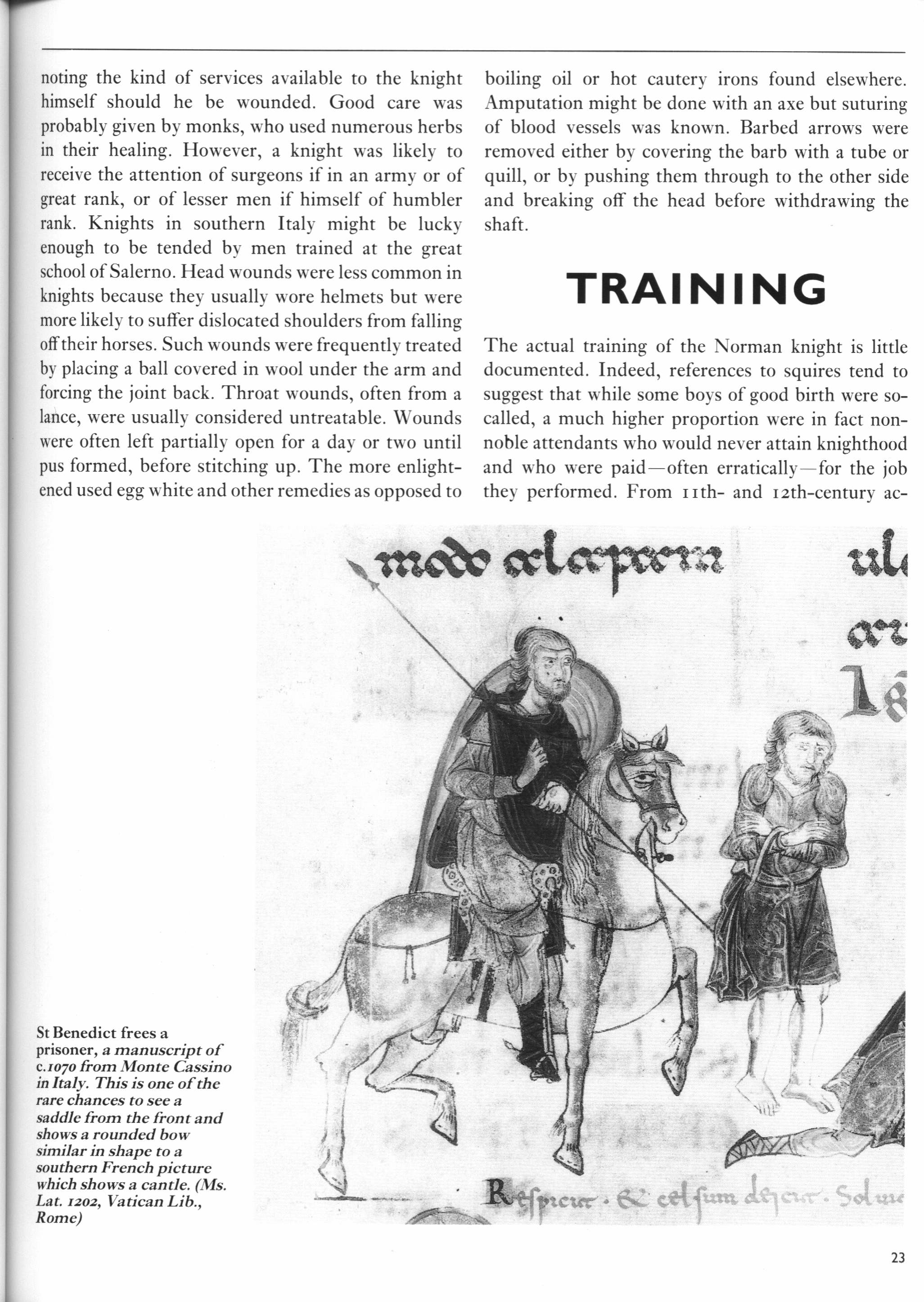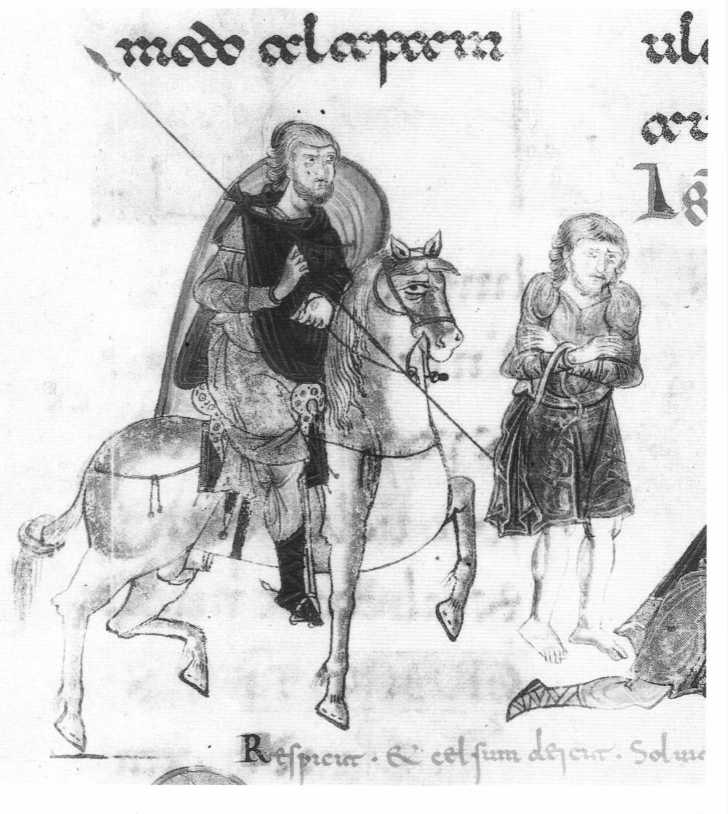65154 w01#


noting the kind of services available to the knight himself should he be wounded. Good care was probably given by monks, who used numerous herbs in their healing. However, a knight was likely to receive the attention of surgeons if in an army or of great rank, or of lesser men if himself of humbler rank. Knights in Southern Italy might be lucky enough to be tended by men trained at the great school of Salerno. Head wounds were less common in knights because they usually wore helmets but were morę likely to suffer dislocated shoulders from falling off their horses. Such wounds were freąuently treated by placing a bali covered in wool under the arm and forcing the joint back. Throat wounds, often from a lance, were usually considered untreatable. Wounds were often left partially open for a day or two until pus formed, before stitching up. The morę enlight-ened used egg white and other remedies as opposed to
boiling oil or hot cautery irons found elsewhere. Amputation might be done with an axe but suturing of blood vessels was known. Barbed arrows were removed either by covering the barb with a tubę or ąuill, or by pushing them through to the other side and breaking off the head before withdrawing the shaft.
TRAINING
The actual training of the Norman knight is little documented. Indeed, references to squires tend to suggest that while some boys of good birth were so-called, a much higher proportion were in fact non-noble attendants who would never attain knighthood and who were paid—often erratically—for the job they performed. From nth- and i2th-century ac-

St Benedict frees a prisoner, a manuscript of c. 10jo from Monte Cassino in Italy. This is one of the rare chances to see a saddle from the front and shows a rounded bow similar in shapc to a Southern French picture which shows a cantle. (Ms. Lat. 1202, Yatican Lib., Romę)
23
Wyszukiwarka
Podobne podstrony:
1933 League of Nations — Treaty Series. 105 Article 20. Should recourse be had to arbitration b
The Banker Problem The “Banker’s Problem” was originally given by Dijkstra in 1986 as an example of
dpp30 vious training, he may first of all practicc on a lighlcr scalę, especially if he be very youn
CHAPTFR ITT 43 86230 rt. i r of no Im por tance, here, whet.her t.he ahovft descrlbed perspftot.1 vf
image002 •We re fighting a new kind of war against determined enemies. And public servants long into
image025 IN TIMES TO COME The cover story next monih u "The Sccond Kind of Loncliness," by
"REALLY SEXY. SIZZLING KIND OF SEXY... MAKES YOU WANT TO MELT IN THE PROCESS."—BITTEN 8Y B
m853 service was assessed in rough units of five or ten ‘knights’. The amount of service was fixed b
Character and personalityGamę Are we the kind of people we are because of the time of the year we we
differently, so standardisation is also possible in case of services. Customisation is very close to
KNOWLEDGE MANAGEMENT SYSTEMS IN POLISH HOSPITALS ... 1. the kind of a hospital own
htdctmw 102 J. Jonah Jameson yelling at Peter Parker on the phone. Okay, but kind of blah. Diff
więcej podobnych podstron